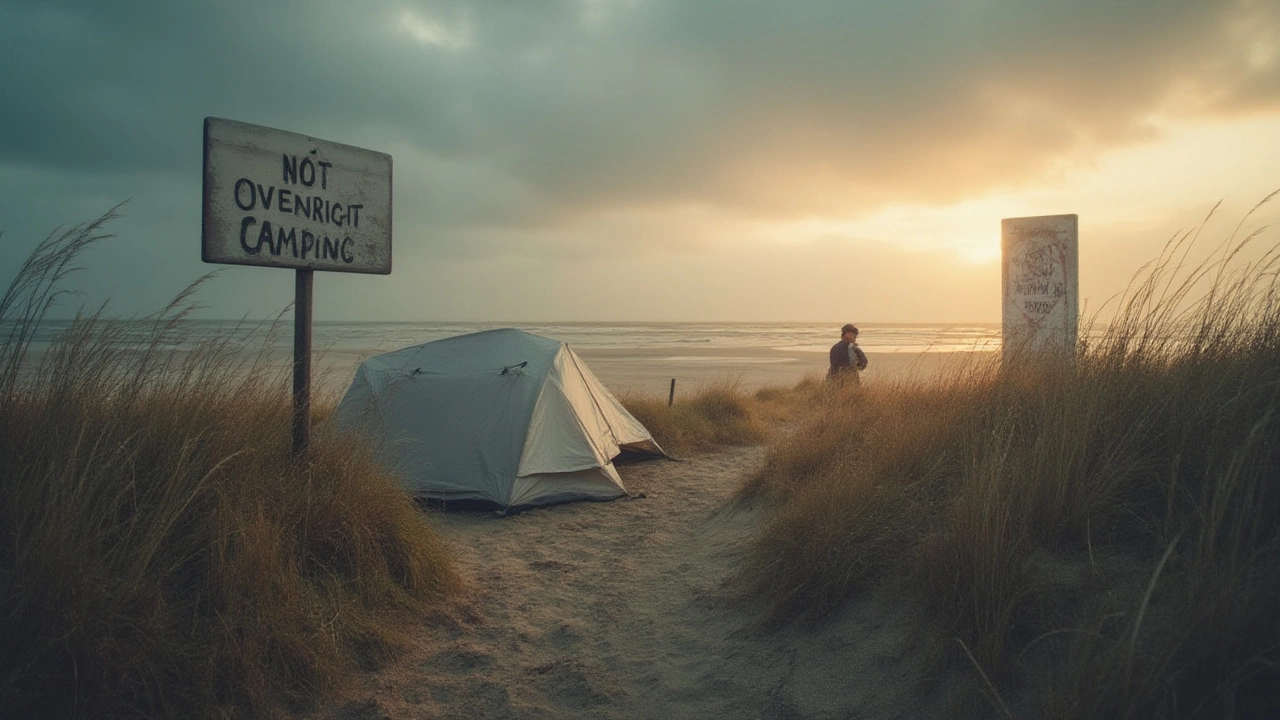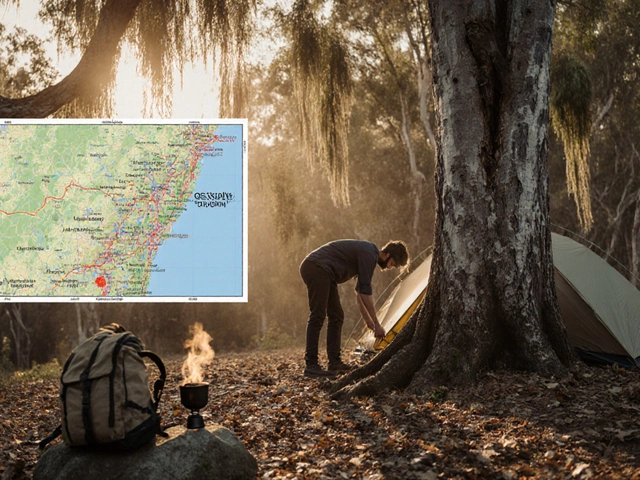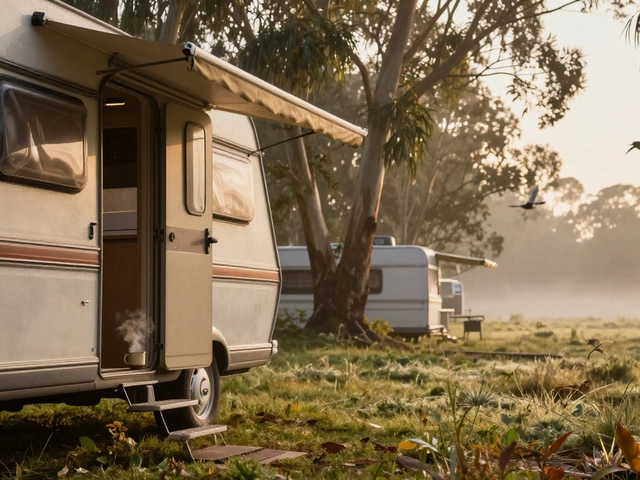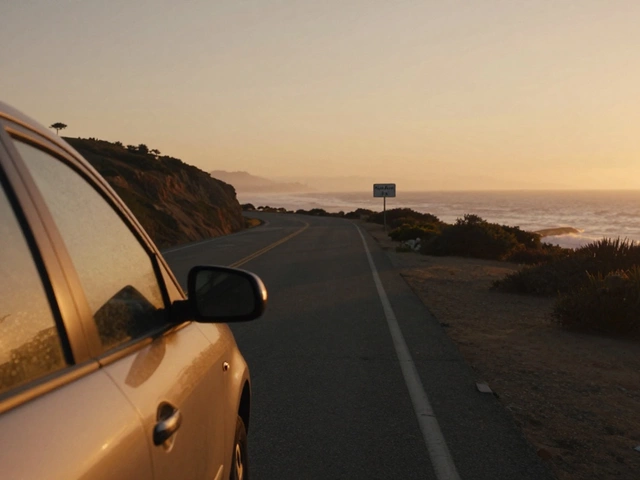Imagine waking up to the sound of crashing waves and a fresh ocean breeze every day. No concrete walls, just a thin sheet of canvas between you and the sunrise. The idea of living in a tent on the beach pulls at something primal. It sounds wild and freeing, almost like an endless holiday. But is this dreamy lifestyle even allowed? And more importantly, is it comfortable—or just a recipe for disaster?
The Dream vs. The Law: What You Need to Know
The allure of sleeping straight on the sand with nothing but a tent is real, but before you even think about unpacking your sleeping bag, you’ve got to check the rules. In Australia—yes, even in beautiful Sydney—just throwing up a tent wherever you like is mostly a no-go. Councils are strict on this stuff. Most public beaches have signs that make it crystal clear: no camping overnight. You can’t just pitch up, light a fire, and call it home. Why? A few reasons: wildlife protection, concerns over litter, fire risks, and keeping things tidy for visitors. Fines can easily hit $200 or even more if you're caught, and in certain shires, rangers are out before sunrise.
But here’s a twist: Australia is massive. There are remote stretches up north or down the coast where the rules get fuzzier. Some beaches in remote national parks or on Crown land might let you set up for a night or two—if you grab a permit ahead of time. These are always managed carefully. For instance, the NSW National Parks and Wildlife Service lists specific spots where you can legally camp right by the ocean. Always look at council or park websites before you go. One wrong move, and you might land a fine or worse, get moved on at 3am.
And it’s not just Australia. In the UK, wild camping on beaches isn’t exactly welcome either. Scotland has relaxed laws (called the Scottish Outdoor Access Code), but most English and Welsh beaches ban camping outside official sites. The US? Every state is different, but most public and popular beaches don’t allow camping outside of designated campgrounds.
Here’s a quick look at the rules in different places:
| Country/Region | Can You Live in a Beach Tent? | Notes |
|---|---|---|
| Australia (NSW) | No (unless in a permitted area) | Most beaches ban tents; check national park camps. |
| Australia (WA, Qld National Parks) | Yes (limited) | Far North Qld and WA have wild camps with permits. |
| UK (England & Wales) | No | Wild camping banned outside campgrounds. |
| UK (Scotland) | Yes (with conditions) | Outdoor Access Code applies—camp responsibly. |
| USA (California) | No | No overnight camping on most CA beaches. |
| USA (Oregon & WA) | Some yes | Limited state parks allow tents on sand with permit. |
So, what’s the secret? Research like mad. Every decent stint on the sand needs either a legit campsite or a local loophole. Always have backup plans for storms, patrols, and tides.
What’s Living in a Beach Tent Really Like?
The sand, sun, and sea sound like paradise—until you meet the downsides head-on. For starters, tents and saltwater aren’t exactly best mates. The wind up the coast? It’ll test your pegs and your patience. Forget about sleeping late, too. Once the sun’s up, your tent’s an oven. Ever tried brushing sand out of your sleeping bag? It never ends.
Now factor in storms. Beach weather can turn on you in an hour. Flash flooding, gale-force winds—your tent’s not as sturdy as a cabin. There’s also zero privacy on busy shores. Kids building sandcastles a metre from your tent, teens blaring speakers at dawn, and awkwardly dodging dog-walkers in your pyjamas.
If you plan to stay for days, even legally, you’ll need to think about fresh water. Hardly any beaches have freshwater showers or taps. You’ll end up carrying litres of water, or using a filtering pump (and if you’re desperate, boiling seawater into condensation). As for food, keeping things fresh is a headache. Ice will last as long as your esky does in that heat—usually not much more than a day or two.
Staying clean challenges your patience. Sand gets everywhere, even your teeth. Toilets? Usually only on the busiest urban beaches. In the wild, you’ll need to bury your waste, always 100 metres from the waterline. Locals won’t thank you if you get this wrong. The Leave No Trace principle is gospel on any good stretch of coast.
Let’s not skip over safety. Coastal wildlife includes everything from crabs and ants to, in more northern parts, snakes and crocs (especially North Queensland). People sometimes forget the risks of sleeping vulnerable on the sand. There’s theft to worry about, and on exposed beaches, it can take just one big wave or king tide to wipe out camp.
For some, these challenges just make the pay-off better. If you’re after peace, aim for the shoulder months—late April or early October—before the summer crowds and before cyclone season. The best tent? A low-profile, four-season dome with tough poles and pegs that actually hold in the sand. Tarps are your friend to create shade and cut down the relentless midday glare.
But there’s still magic in it. At night, a billion stars. Days that end with salt on your skin. Every moment feels bigger out here.
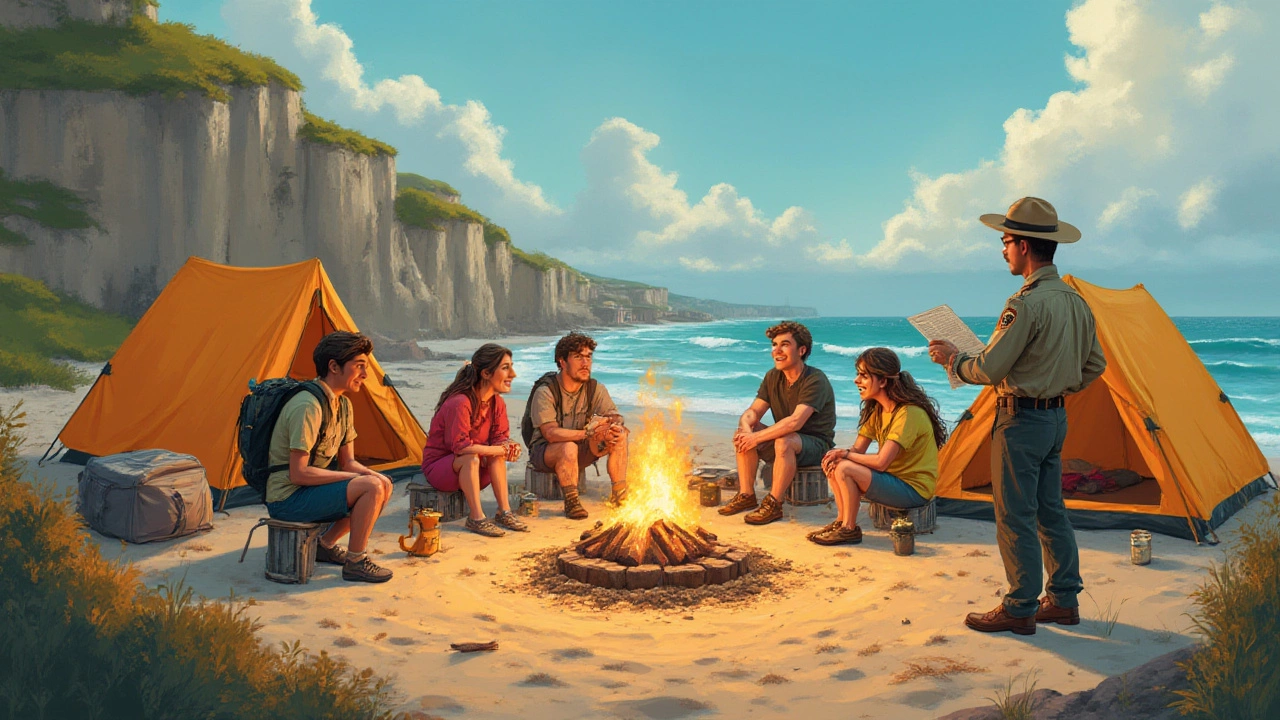
How to Survive and Actually Enjoy It: Essential Tips
If you’re determined to try living on the sand—whether for a quick retreat or a longer digital detox—here’s what you need to know. Preparation decides if you thrive or if you’re taking an Uber home at midnight.
- Pick the right tent: Not all tents handle coastal weather. Go for something with sturdy, flexible poles (fibreglass or alloy) and a compact shape. Tall cabin tents act like wind sails and usually collapse. Look for strong zippers to keep sand out and lots of mesh for airflow.
- Anchor your spot properly: Forget standard tent pegs. Use sand stakes (wider or screw-in) or improvise with buried bags full of sand. On rocky parts above the beach line, big stones can work in a pinch.
- Plan for shade and water: Tarps are life-savers for shade. Fold one over your tent or rig a shelter with poles. For water, work out at least 5 litres per person per day. Stash it in strong, broad containers in your shade, not in the tent, or you’ll cook.
- Be ready for bugs: Sandflies, mozzies, and ants are relentless. Natural repellents with eucalyptus or citronella can help, plus physically block them with netting over doors and vents.
- Keep your gear dry: Store clothes and bedding in dry-bags or at least plastic tubs. Even dew in coastal air can soak things, not to mention storms.
- Have meals planned: Think things you can eat cold or easily heat on a single butane burner. Rice or noodles, cans of chickpeas, saltines, fruit—none need a fridge.
- Don’t skimp on sunscreen: The wind can fool you into thinking you’re fine, but burns come fast. Reapply every couple of hours when exposed.
- Know where to go for help: For longer stays, know your closest lifeguard base or first-aid kit. Save local emergency contacts in your phone.
And whatever you do, leave only footprints. “The coast is an incredibly sensitive ecosystem—every tent peg, every campfire, makes an impact,” says Dr. Melanie Gibbons, coastal ecologist at UNSW, in The Guardian:
We love sharing our beaches, but it takes real respect and care to keep them special for everyone—including the wildlife that calls them home.
One extra hack? Download tide charts for the area, and always pitch behind the highest obvious debris line, or you could wake up paddling at 2am.
When Is Tent Living on the Beach a Good Idea?
So, is it ever a good idea to make a tent your home on the beach—even for a week? The quick answer: only in rare, well-researched and permitted situations. If you land a spot in a legal campsite or one of those epic national parks, it can be next-level. Maybe it’s about reconnecting with yourself, going off-grid for a while, or just challenging yourself to unplug. Remember, modern life isn’t built for tent living, so you’ll need to want it more than you need comfort.
Certain beach festivals and community events do allow tent camping—with the right permit. For instance, on some parts of Stradbroke Island or along the Top End, there are stretches where rangers actively supervise campers. In those places, you get a rare taste of true beach camping.
If you’re young, on a gap year, or just need a perspective shift, a night or two on the sand can work wonders. You’ll struggle for phone signal, feel out of whack at first, but after one or two sunrises, your mind resets. There’s a weird clarity in the basic routine: cook, swim, sleep, repeat. And every swim feels like an achievement.
But if you picture going off-grid, right through winter storms or mid-summer scorchers, don’t kid yourself. Tents aren’t built for months of wind, salt and blowing sand. You’d soon want a day indoors—or at least a roof—and maybe a hot shower.
Want to keep it sustainable? Stick to legal camping zones, ask locals where it’s safe, and always have a trash plan. Use biodegradable or re-usable cutlery and solar-powered lights. And share that tiny bit of paradise, without wrecking it.
In the end, living in a tent on the beach could be your best story: “That time when I slept under the Milky Way and the biggest worry was the next high tide.” But treat it as an adventure, not a permanent solution. Respect the rules, know your risks, and you’ll get the best the ocean has to offer—with all your gear (and dignity) still intact.
